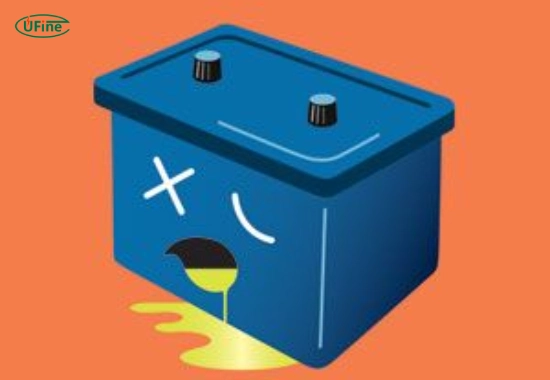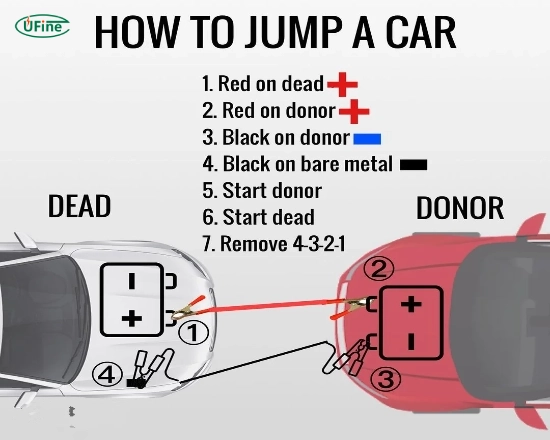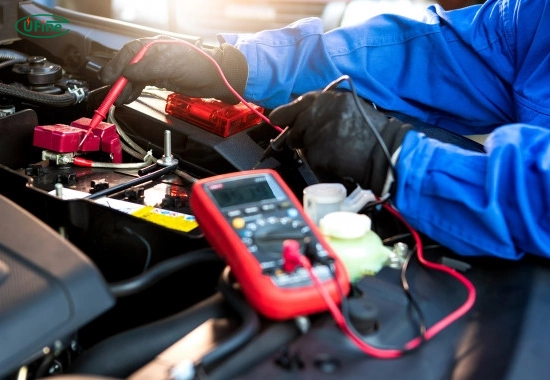A dead battery can be a frustrating experience, especially when you need your car, motorcycle, or other battery-powered devices to work. But how can you revive a dead battery and restore it? Whether it’s a car battery or a smaller device battery, understanding the proper techniques for charging it is essential to avoid damage and extend its lifespan. In this article, we’ll cover everything you need to know about how to charge a dead battery, step by step. Let’s dive in!
Part 1. What is a dead battery?
A dead battery no longer has a charge or has dropped below the voltage required to power a device or vehicle. While the battery is completely unusable, you can often recharge it and bring it back to life using the proper methods.
Part 2. Why does a battery die?
There are several reasons why a battery might lose its charge, including:
- Leaving lights or accessories on: It is common in vehicles to leave the headlights or cabin lights on, draining the battery.
- Old age: Most batteries have a lifespan of 3–5 years.
- Extreme temperatures: Very high and very low temperatures can cause a battery to lose its charge.
- Corrosion: Battery terminals may corrode over time, weakening the connection.
- Parasitic drain: Devices like alarms or electronics can drain the battery even when the engine is off.
Understanding why a battery dies helps you prevent future issues.
Part 3. How to identify if a battery is completely dead?
Before attempting to charge your battery, you must determine whether it’s dead or low on charge. Here are some signs of a dead battery:
- The engine won’t start, and you hear a clicking noise.
- Lights and electronics are dim or entirely off.
- A multimeter reading shows a voltage under 12.2 volts (for a car battery).
- If the battery is dead, jump-starting or a special charging method may be required.
How do you Tell if a Battery is Dead?
Part 4. What tools do you need to charge a dead battery?
To safely and effectively charge a dead battery, you’ll need the following tools:
- Battery charger: A device specifically designed to recharge batteries.
- Jumper cables: For jump-starting with another vehicle or battery.
- Multimeter: To measure the voltage before and after charging.
- Protective gloves and goggles: Safety first!
- Distilled water (for some batteries): This is used to refill the electrolyte if the levels are low.
Part 5. How to charge a dead car battery step by step?
- Step 1: Check the battery
Before starting, inspect the battery for visible damage, such as cracks or leaks. If you notice any damage, do not attempt to charge it—it may need replacement.
- Step 2: Clean the battery terminals
Use a wire brush or a battery terminal cleaner to remove any corrosion or dirt from the terminals. This ensures a good connection.
- Step 3: Choose the right charger
Select a battery charger that matches your battery type and voltage. For example, most car batteries require a 12-volt charger.
- Step 4: Connect the charger
Attach the charger’s red clamp to the positive (+) terminal and the black clamp to the negative (-) terminal. Make sure the connections are secure.
- Step 5: Set the charger
Follow the charger’s instructions to set the appropriate voltage and amperage. A slow charge is often better for a dead battery as it prevents overheating.
- Step 6: Start charging
Turn on the charger and let the battery charge. This process can take several hours, depending on the battery size and charger settings.
- Step 7: Monitor the progress
You can check the charger’s display or use a multimeter to monitor the battery’s voltage. Once it reaches around 12.6 volts, you know the battery is fully charged.
Part 6. Can you jump-start an utterly dead battery?
Yes, it is possible to jump-start a completely dead battery, but it depends on its condition. Here’s how you can do it:
- Find another vehicle or battery: The donor vehicle or battery should have sufficient charge.
- Connect the jumper cables: Attach the red cable to the positive terminals of both batteries and the black cable to the negative terminals. Make sure the connections are secure.
- Start the donor vehicle: Let it run for a few minutes to transfer the charge.
- Start your vehicle: Turn the ignition with the dead battery. If it starts, let it run for at least 20–30 minutes to recharge further.
Part 7. How to charge a dead battery without a charger?
If you don’t have a battery charger, you can charge a dead battery using the following methods:
- Push-start (for manual transmission cars): Push the car while it’s in gear and release the clutch to start the engine.
- Solar chargers: Portable solar panels can provide a trickle charge to your battery.
- Alternator charging: If the battery has a small charge, starting the vehicle and driving around can recharge it using the alternator.
Part 8. How long does it take to charge a dead battery?
The time required to charge a dead battery depends on several factors, including:
- Battery size: Larger batteries take longer to charge.
- Charger type: Fast chargers can recharge a battery in 1–3 hours, while trickle chargers may take 12–24 hours.
- Battery condition: An older or heavily discharged battery may take longer.
On average, charging a completely dead car battery with a standard charger can take 4–6 hours.
Part 9. How to maintain your battery to avoid it dying?
To prevent your battery from dying in the future, follow these maintenance tips:
- Regularly inspect the battery: Check for corrosion and clean the terminals.
- Drive your vehicle regularly: The alternator keeps the battery charged.
- Avoid leaving electronics on: Turn off lights, radios, and other devices when the engine is off.
- Check the electrolyte levels: For lead-acid batteries, maintain proper fluid levels with distilled water.
- Use a trickle charger: If your vehicle sits unused for long periods, a trickle charger can maintain the charge.
Part 10. FAQs
-
Can a dead battery be fully recharged?
A dead battery can be fully recharged if it hasn’t suffered severe damage. However, prolonged discharge or old age may permanently reduce its capacity. -
Is it safe to charge a dead battery indoors?
It’s best to charge a battery in a well-ventilated area to prevent the buildup of gases like hydrogen, which can be flammable. Avoid charging in confined indoor spaces. -
What voltage is considered a dead battery?
A car battery’s voltage below 12.2 volts is considered low. A voltage below 10.5 volts may indicate a severely discharged or dead battery. -
Can you overcharge a battery?
Overcharging a battery can cause overheating, damage, and even explosions. To prevent overcharging, always use a charger with an automatic shut-off feature. -
When should I replace a dead battery instead of charging it?
If the battery fails to hold a charge or shows physical damage, it’s time to replace it. Additionally, if the battery is over 5 years old, it may no longer be reliable.
Related Tags:
More Articles

How to Choose the Best Floor Scrubber Battery for Commercial Cleaning?
Selecting the ideal floor scrubber battery ensures a long runtime, rapid charging, and minimal maintenance for efficient commercial cleaning operations.
Battery for Blower vs Battery for Leaf Vacuum: Which One Should You Choose?
Battery for blower vs leaf vacuum—learn the key differences in power, fit, and runtime to choose the right battery for your outdoor tool needs.
How to Choose the Right Battery for Blower?
Choosing the right blower battery? Consider voltage, capacity, chemistry & usage. This guide helps match the best battery for peak performance.
How to Choose the Best Insulated Battery Box for Lithium Batteries?
Choosing the Best Insulated Battery Box for Lithium Batteries? Discover key factors such as size, material, and safety for optimal protection and performance.
7 Critical Elements on a Lithium Battery Shipping Label
What must be on a lithium battery shipping label? Learn 7 key elements to ensure safety, legal compliance, and correct handling across all transport modes.






